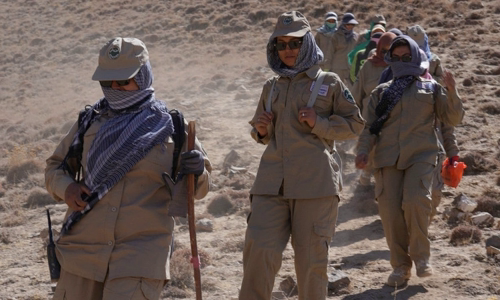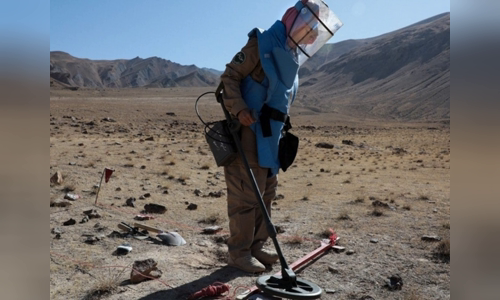When Gulandam joined the first female demining squad in Afghanistan, the men who met on the road spared no insults at her.
"At first, we had to face a lot of problems, especially when walking on the road in anti-mine protective clothing," said Gulandam, one of the 16 members of the female bomb detachment team, which was approved by the Action Agency. United Nations Landmine and UXO (UNMAS) funding. The Gulandam family is extremely worried because this job is too dangerous for women.

Afghanistan's women's team clears mines on the way to work Photo: UNMAS Afghanistan
Afghanistan is the most dangerous country for women, according to the Amnesty International, based in the UK. The assassination of Mina Mangal, a prominent Afghani journalist and political adviser in May, has further highlighted the insecurity of women in the country.
Gulandam understands the possible risks of doing this job every day. It is estimated that nearly 100 Afghans die of landmines and UXO remaining each month after the war.
Despite the risks, women like Gulandam have been at the forefront of mine clearance efforts in Afghanistan. In October, Bamyan became the first province in Afghanistan to eradicate mines and ERW thanks to the contribution of the bomb disposal team to most of the local women.
Demining activities in Afghanistan since 1989 have helped remove more than 18 million explosives, but women have only been involved in the dangerous activity since last year.
Since coming to power in 1996, the Taliban have imposed strict rules on Afghan women such as not attending school, working or leaving home without a male companion. Although the Taliban has been overthrown, women here still face many risks of being attacked by conservative groups or family members.
Bamyan, 250 km west of Kabul, is the cultural center of the Shia Hazara community, home to famous Buddha statues that were destroyed by Taliban militants in 2001.
"When doing clearance work, I felt like a soldier fighting a hidden enemy of bombs and mines," Gulandam said.
This work is risky and requires meticulous. It took the girl team the entire month to detonate mines and ERW on an area of 10,000 square meters, the size of a football field. They use metal detectors to detect mines, then evaluate and classify them before making treatment plans, such as controlled explosions, removing or deactivating fuses.

A member of the female demining team is exploring mines in Bamyan Photo: UNMAS Afghanistan
Gulandam still remembers clearing one of the last mines in Bamyan, her team fumbling for two hours searching for mines on a rock. Even a small mistake could cause them to lose limbs or worse.
"I proved to my family that if men do dangerous jobs, women can," Gulandam said.
When the landmines and mines were removed, they not only protected the lives of many Afghans, but the people here also had more land to farm.
"People in Bamyan now appreciate the work we do, and the taunts and insults are no longer much," Gulandam said.
In a country where it is difficult to find a job like Afghanistan, mine clearance has given many valuable opportunities to women here. "The main motivation for me to join the team was to want to be financially independent," said Mamlakat, a member of the team.
After divorcing her husband 9 years ago, Mamlakat moved back to live with her parents, but she needed money to support her daughter. "I am happy to do this job, because it helps me solve financial problems and contributes to the safety of everyone," Mamlakat said.
Fezah Fezayee, another member of the team, used the pay from mine clearance to give her husband the opportunity to return to school.
"Afghani women have gone through a dark time, but it's hard to believe now that they dare to stand up to defy the stereotypes of becoming landmine cleaners," said Makiz Nasirahmad, a UNMAS employee. "I believe this will inspire Afghan women and be a symbol of feminism in this country."



 NancyWard
NancyWard







